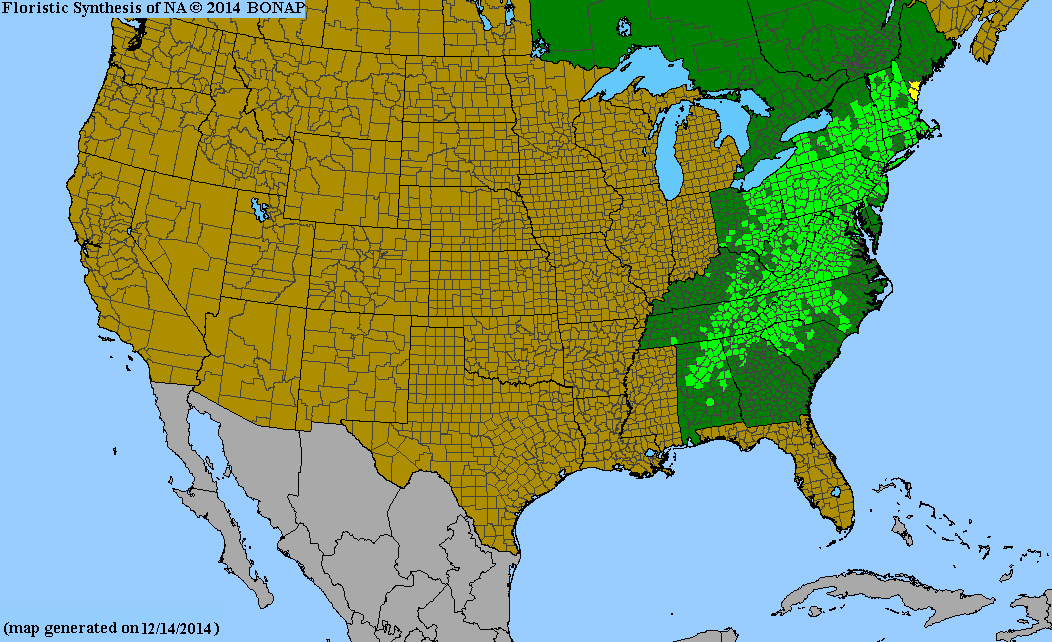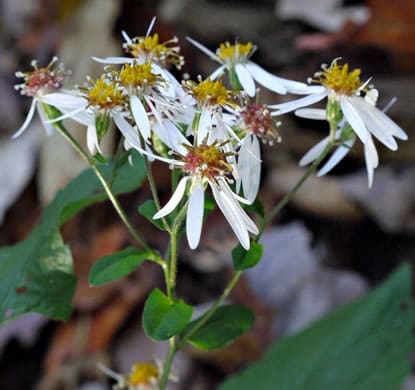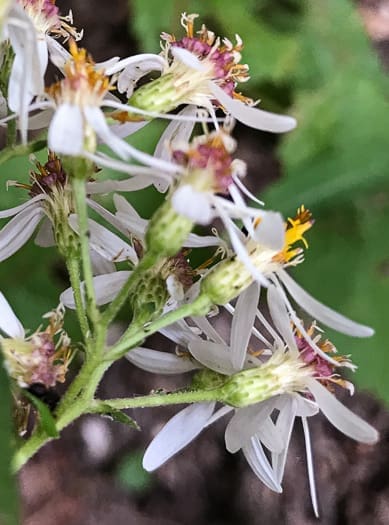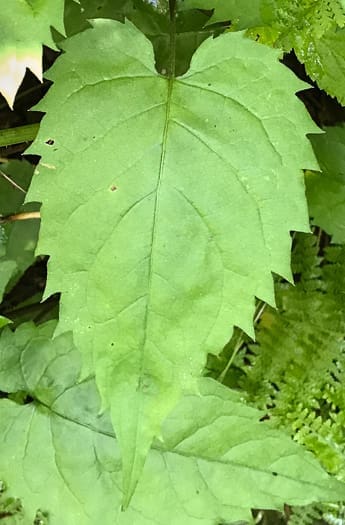Asteraceae
white wood aster
Eurybia divaricata
Synonyms
Aster divaricatus var. divaricatus
Aster boykinii
Aster castaneus
Aster divaricatus
Aster excavatus
Aster flexilis
Aster stillettiformis
Aster tenebrosus
Other Common Names
woodland aster, common white heart-leaved aster
Plant Type
Herbaceous Wildflower
Life Cycle
Perennial
Typical Size
1-3 ft. tall
1.5-2.5 ft. wide
Tolerant of
Deer, Drought
Inolerant of
Direct Afternoon Sun
Propagation
By seed
Plant Propagation Notes
Seeds mature in late fall. Clumps can be divided in early spring.
Plant Planting Notes
Spreads aggressively by rhizomes.
Plants/Diseases
Somewhat susceptible to powdery mildew and aster wilt.
Wildlife Benefits
Nectar/pollen source for pollinating insects, Host plant for butterfly larvae, Fruit/seeds for birds
Leaves
Basal leaves are ovate with cordate bases up to 2.5 inches long and 2 inches wide. These leaves with when the plant flowers. Leaves on the lower stem are up to 8 inches long with cordate or rounded bases. The upper leaves are sessile and oval to lance-shaped. All leaves are serrate with hairs are present on the underside.
Flowers
Flowers are 1/2 – 1 inch wide with white rays and yellow disk centers that change to red when pollinated and appear in flat-topped, terminal clusters with 6-10 white petals. Bracts are whitish with green trips. Flowering time is generally earlier than most Asters.
Fruit
Although often referred to as an achene, the fruit is a cypsela.
Toxicity
No known toxicity.

USDA Hardiness Zones
3, 4, 5, 6, 7, 8
Light Exposure
Part Sun/Shade, Full Shade
Soil Moisture
Dry, Medium
Soil Drainage
Well-drained
Soil pH
Acidic (less than 6.0), Neutral (6.0-8.0)
Native in South Carolina?
Yes
Plant Native Habitat
Native to forests and woodlands ranging from moist to fairly dry.
Global Conservation Status (NatureServe)
Secure (G5)
Federal Conservation Status (USFWS)
Not Listed
Distribution Notes
Within South Carolina, white wood-aster is absent in the Coastal Plain, common in the Piedmont,
and common in the Mountains.



